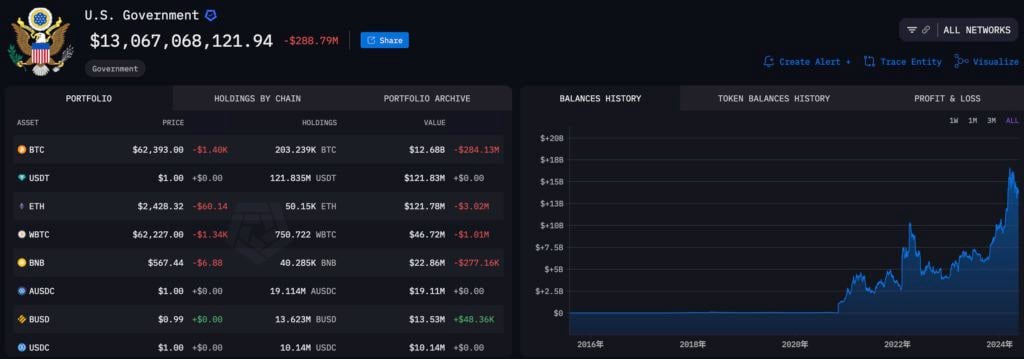With the Christmas season approaching, it’s worth noting which asset—gold or Bitcoin—will benefit more from year-end seasonal demand, macroeconomic factors, and changes in market liquidity.
![图片[1]-In the upcoming “Christmas rally” in the investment market, which is more promising: Bitcoin or gold?-OzABC](https://www.ozabc.com/wp-content/uploads/btcandgold-750x375-1.jpg)
nowThe Christmas sales this year may arrive earlier than expected.
The so-called “Christmas rally” refers to the phenomenon where the cryptocurrency market typically experiences a price surge in the last few weeks of December and into early January. This trend is driven by multiple factors, including annual reallocation of funds due to portfolio adjustments by institutions and traders, and a seasonal boost in investor confidence.
Decreased market liquidity during the holiday season could amplify price volatility, further fueling the rebound. There is a clear difference in market behavior for crypto assets throughout the year and during the Christmas period. While this trend originated in traditional stock markets, it has begun to be reflected in the gold market and, more recently, in the Bitcoin market.
Whenever global markets slow down due to the holidays, market participants reassess the potential for Christmas-related price movements. During periods of low liquidity or shifting market sentiment, gold and Bitcoin can react very differently.
Investors are now debating: which asset class—gold or Bitcoin—will benefit more from the anticipated seasonal rally in December?
To protect their wealth from inflation, people have been buying gold for generations. Central banks around the world also hold large amounts of gold in their reserves as an important part of foreign exchange reserve management and monetary policy.
At the end of each year, seasonal demand for gold tends to rise, which is usually due to a combination of factors:
- Jewelry purchases typically increase during festival and wedding seasons in India and China;
- Central banks around the world continue to adjust their reserve structures, tending to increase their gold holdings;
- Institutions conduct year-end risk management and portfolio adjustments.
Golden Holiday Performance
December is not typically a month for soaring gold prices; rather, they tend to rise gradually. During periods of economic downturn or geopolitical turmoil, gold often exhibits stronger safe-haven characteristics than other assets.
While gold prices fluctuate with the overall economy, they rarely offer the spectacular returns of cryptocurrencies.
Even so, gold prices soared this year, hitting record highs multiple times, reaching a peak of $4,380 per ounce, and the subsequent correction was unprecedented.
Gold has rebounded sharply from its recent decline and is currently trading above $4,100 per ounce, a remarkable performance. In this highly active market, long positions have generated substantial profits.
With the US government shutdown ending and the national debt expected to reach a record high of $40 trillion, the precious metal has rebounded from its deep decline.
Gold prices are currently only 7% away from their all-time high, and investors are well aware that deficit spending will only increase further once the government shutdown ends.
Bitcoin: A New Choice for Store of Value
Since Bitcoin’s price hit around $16,000 in November 2022, the view that “Bitcoin is digital gold” has gained widespread acceptance, and its price has continued to rise since then.
On December 5, 2024, Bitcoin broke the $100,000 mark for the first time and has since reached that level multiple times. At its peak in October of this year, Bitcoin’s price surpassed $125,000, but similar to gold, it subsequently experienced a significant pullback.
Even so, Bitcoin has largely held onto the key psychological level of $100,000, only briefly dipping below it a few times.
Bitcoin’s decentralized structure and fixed supply of 21 million coins make it a potential option for hedging against monetary inflation.
Overall, however, Bitcoin is considered a riskier investment than gold: its price can surge when investor confidence is high, and plummet when confidence is low.
Historically, Bitcoin’s performance in the fourth quarter of each year has been remarkable.
![图片[2]-In the upcoming “Christmas rally” in the investment market, which is more promising: Bitcoin or gold?-OzABC](https://www.ozabc.com/wp-content/uploads/in-the-upcoming-christmas-rally-in-the-investment-market-which-is-more-promising-bitcoin-or-gold.png)
Macroeconomic factors are the core driving force this year.
This year, the current economic situation has become the most critical factor in determining whether the Christmas rebound will materialize as expected.
Market liquidity availability, price stability indicators, and central bank policies (especially those of the Federal Reserve) are all key influencing factors.
At the Federal Reserve’s October 2025 policy meeting, the central bank will cut the federal funds rate by 25 basis points, setting a new target range of 3.75%-4.00%. This rate cut is in line with market expectations and is another move following the September rate cut, bringing borrowing costs to their lowest level since the end of 2022.
Lower interest rates typically lead to a depreciation of the US dollar, which may in turn increase investor interest in alternative assets such as Bitcoin.
The report shows that the official US inflation rate in September 2025 will be 3.0%, higher than 2.9% in August; however, the core inflation rate will decline slightly from 3.1% to 3.0%. During periods of high inflation, market attention to alternative assets such as Bitcoin and safe-haven assets such as gold tends to increase significantly.
Unlike traditional assets, Bitcoin exhibits higher volatility in liquidity.
Institutional purchases of Bitcoin exchange-traded funds (ETFs), as well as small inflows of funds, can have a significant impact on short-term price fluctuations.
The core difference between the two asset classes lies in the buyer groups: the main buyers of gold are jewelers, sovereign wealth funds, and central banks; while the core supporters of Bitcoin are young digital currency enthusiasts, technology pioneers, and retail investors.
Historical performance comparison of gold and Bitcoin
In recent years, both asset classes have risen in tandem during multiple rebounds, a trend that was particularly pronounced in 2025. However, there have also been several instances where “one asset class rebounded before the other asset class began its upward cycle.”
In 2020, in response to the economic recession caused by the pandemic, governments around the world launched large-scale stimulus plans. As fiat currencies depreciated, investors seeking to preserve their assets flocked to assets with a promise of stability.
At the beginning of the year, gold prices surged; in the second half of the year, Bitcoin’s momentum rose. In December 2020, gold closed at $1,900, a slight increase; while Bitcoin approached its stage high, closing at around $29,000.
This case demonstrates that Bitcoin typically outperforms traditional assets such as gold during periods of ample market liquidity and low interest rates.
Inflation soared from 2021 to 2022, prompting central banks around the world to raise interest rates sharply in response.
During this market crash, speculative risk assets such as Bitcoin suffered heavy losses. Market participants turned to gold, a traditional safe-haven asset, whose price experienced multiple rounds of increases, demonstrating remarkable resilience.
This suggests that gold typically outperforms Bitcoin in preserving value during periods of monetary tightening and market stress.
With the government shutdown freezing data, the fiscal impasse in Washington has now ended, and the release of inflation data will largely determine which of the two asset classes will win the Christmas rally.

















